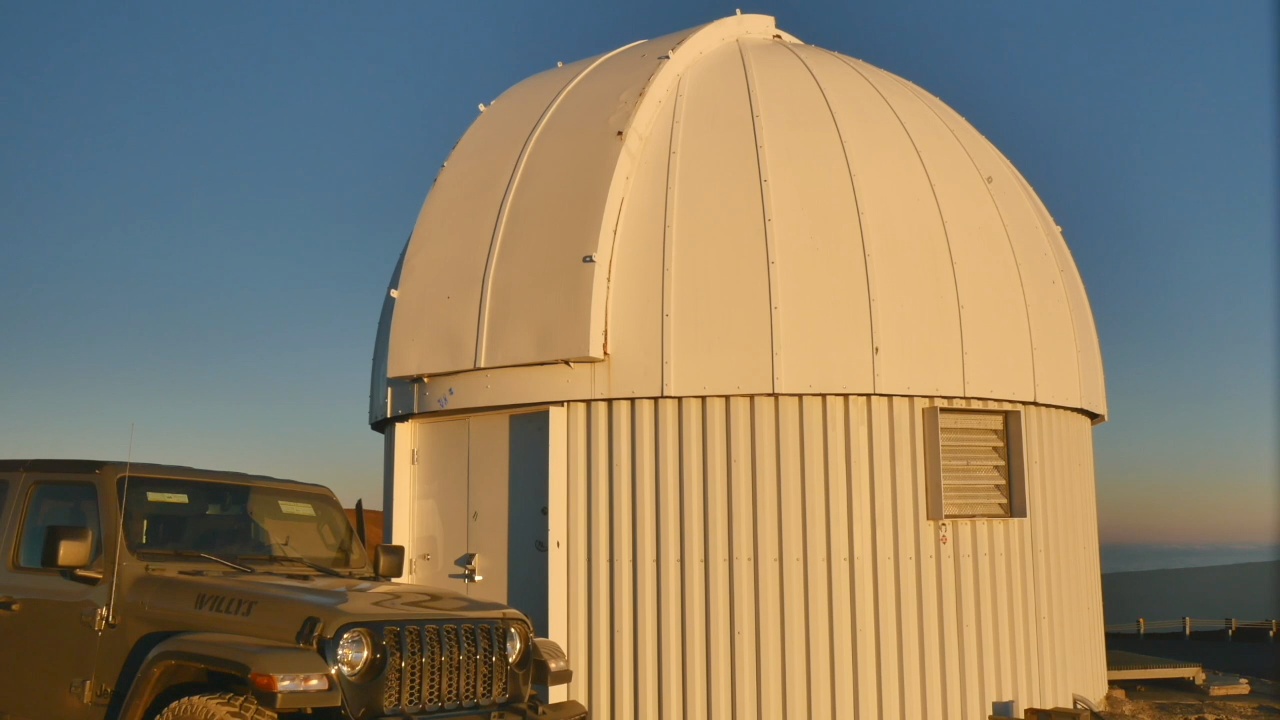Maunakea Telescope Removal To Begin This Summer
(BIVN) – The Caltech Submillimeter Observatory, or CSO, will begin the process of deconstruction this summer, with plans to remove the facility from the summit area of Maunakea by the end of 2022.
The announcement was made following a Hawaiʻi Board of Land and Natural Resources vote on January 14, approving a Conservation District Use Permit to allow the decommissioning of the CSO telescope.
From a February 10th news release from Caltech:
The CDUP is the culmination of the careful process required under Hawai‘i law to address technical aspects of removal of the CSO and the restoration of its site, including a detailed review of the potential cultural and environmental impacts. The CDUP sets the terms and conditions that Caltech must follow during the decommissioning. Copies of the CDUP, the Final Environmental Assessment, and other planning documents can be found here.
“We are grateful to move forward with the deconstruction process,” said Caltech physics professor and CSO Director Sunil Golwala, Ph.D. “Caltech aims to undertake the decommissioning this summer, with removal and restoration completed by the end of 2022,” said Golwala. It will be the first observatory removed under the 2010 Decommissioning Plan for Maunakea Observatories.
During its lifespan, the CSO was one of the world’s premier facilities for astronomical research and instrumentation development at submillimeter wavelengths.
The CSO’s 10.4-meter submillimeter telescope, which came online in 1987 for use in research by astronomers at Caltech and other institutions, is housed in a compact dome near the summit of Maunakea. The telescope was used by scientists, including almost 200 student and postdoctoral researchers, to open a new submillimeter window on the universe. A summary of CSO’s contributions to astronomy and astronomical instrumentation are available here. All the astronomical instruments were removed from the facility in 2015.
The University of Hawaiʻi followed with a news release of its own, adding that a second observatory on Maunakea – the UH Hilo Hōkū Kea Telescope – is on track to be decommissioned in 2023.
“The decommissioning of these first two observatories will be milestones in the stewardship of the mauna,” said Greg Chun, executive director of the UH Hilo Center for Maunakea Stewardship (CMS). “This is a very thorough process as a lot of work went into the development of the CMP more than a decade ago, which guides our management of Maunakea.”
The University wrote:
CMS is responsible for administering the BLNR approved CMP along with the new Maunakea Master Plan, approved by the UH Board of Regents in January 2022, and the administrative rules.
The new Master Plan set a limit of nine operating astronomy facilities on Maunakea by 2033. Five of the 14 astronomy sites will be closed permanently to astronomy development once the existing facilities there have been decommissioned.
More broadly, the Master Plan serves as a framework for aligning land-use decisions consistent with UH’s mission and purpose. The administrative rules cover public and commercial activities.
The CMP addresses activities like cultural, natural, and scientific resource protection, education and outreach, permitting and compliance, infrastructure and maintenance, construction activities, operations, and monitoring. The CMP has four sub-plans—public access, cultural resources management, natural resources management and observatory decommissioning that further specify those activities. According to the decommissioning sub-plan, the Maunakea Observatories are responsible for the cost of decommissioning.
The CDUP for CSO sets the terms and conditions required for decommissioning. As part of the process, CSO has completed an archeological assessment, a cultural setting analysis, a hydrogeological evaluation, a biological inventory, a biological setting analysis, a traffic analysis and an asbestos/lead paint/mold survey.


